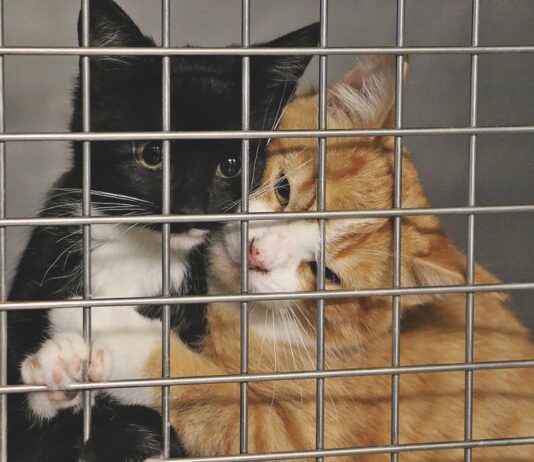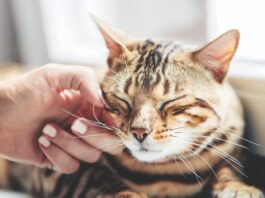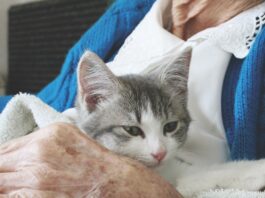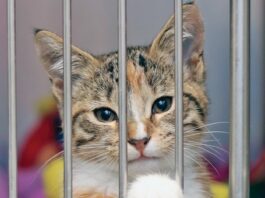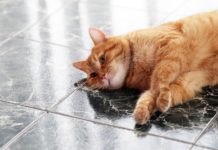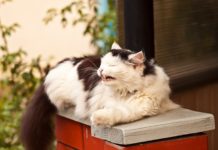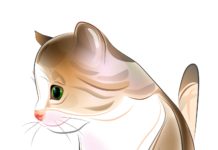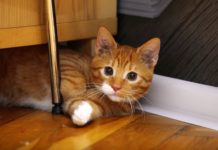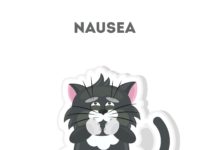Free Download AVMA Coloring Book:
The American Veterinary Medical Association has a downloadable PDF for your kids called Owning a Pet:
Feline Pancreatitis May Be Chronic
When pet owners think of pancreatitis, often the image that comes to mind is a dog who does a garbage raid and consumes a bunch of spoiled or fatty food. Dietary indiscretion usually is not considered a cause of pancreatitis in cats, perhaps because cats are more fastidious in their eating habits!
Good-Bye Severe Sinus Problems
Despite the disturbing definition that will first appear if you do an internet search for rhinotomy (mutilation or amputation of the nose), this procedure can be beneficial to cats experiencing chronic nasal problems. There are two primary surgical techniques: dorsal rhinotomy and ventral rhinotomy. In both cases, the surgeon removes part of the bone surrounding the cats sinuses in order to gain access to the sinus and remove the source of the problem, be it a foreign body, a tumor, or infected tissues.
Tooth Resorption
Tooth resorption, still sometimes referred to as feline odontoclastic resorptive lesions or FORLs, is a common and painful condition affecting cats teeth. In cats with this condition, one or more teeth slowly break down and resorb, exposing the pulp of the tooth. Estimates of how many cats are affected by tooth resorption range from 20 to 60 percent.
Litterbox Covering at 1 Month of Age
Why cats cover their feces in a litterbox is a subject of debate, but we know it begins at a young age. Kittens cover their eliminations by 1 month of age by raking loose dirt over the excrement, says Pamela J. Perry, DVM, Ph.D. The specific site and substrate tend to be learned from the queen. It is believed that the odor of the feces initiates the burying behavior. In fact, some cats will cover the feces of other cats in the household.
AVMA Releases Stats on Pet Ownership
Pet ownership is on the rise in the United States, with dogs leading the way and large increases in less traditional pets like poultry and lizards, according to the American Veterinary Medical Association (AVMA).
FDA Approves Revolution Plus
The U.S. Food and Drug Administration (FDA) has approved Revolution Plus (selamectin and sarolaner topical solution), a new combination topical product that provides protection against fleas, ticks, ear mites, roundworms, hookworms, and heartworms for cats and kittens as young as eight weeks of age and weighing 2.8 pounds or greater. Revolution Plus combines the proven broad-spectrum protection of selamectin (found in Revolution) with the advanced flea- and tick-killing power of sarolaner.
Soothing the Savage Beast
Many family cats show signs of stress at some point. It may be a short-term stress, which is a swiftly passing stage that may occur after a move or the addition of a new pet. But some cats show long-term stress. Stress may manifest itself as urinary marking, aggression toward people or other pets, scratching inappropriate things like furniture, or overzealous grooming leading to hair loss and possible skin lesions. Some physical ailments, such as idiopathic cystitis and chronic gastrointestinal problems, can also be stress-related.
Shivering Cats
You turned the heat up, the whole family is roasting, but your cat appears to be shivering! What do you do now?
Kids Bored This Winter?
The American Veterinary Medical Association has a downloadable PDF called Owning a Pet: A Job for the Whole Family.
Hefty Fines for Adulterated Pet Food
According to the U.S. Department of Justice, two companies-Wilbur-Ellis Company, San Francisco, Calif., and Diversified Ingredients, Inc., Ballwin, Mo.- were found guilty in federal court of adulterating and misbranding pet food ingredients. Both companies pleaded guilty of the misdemeanors.
Dolasetron Fails for Vomiting in Felines
Dolasetron (brand name Anzemet) has been used in people to help with chemotherapy-induced nausea. It inhibits vomiting and nausea via pathways in both the gastrointestnal tract and the central nervous system. This dual action made it sound helpful to cats, thought researchers in California. Their study was reported in the August 2018 Journal of Feline Medicine and Surgery.

